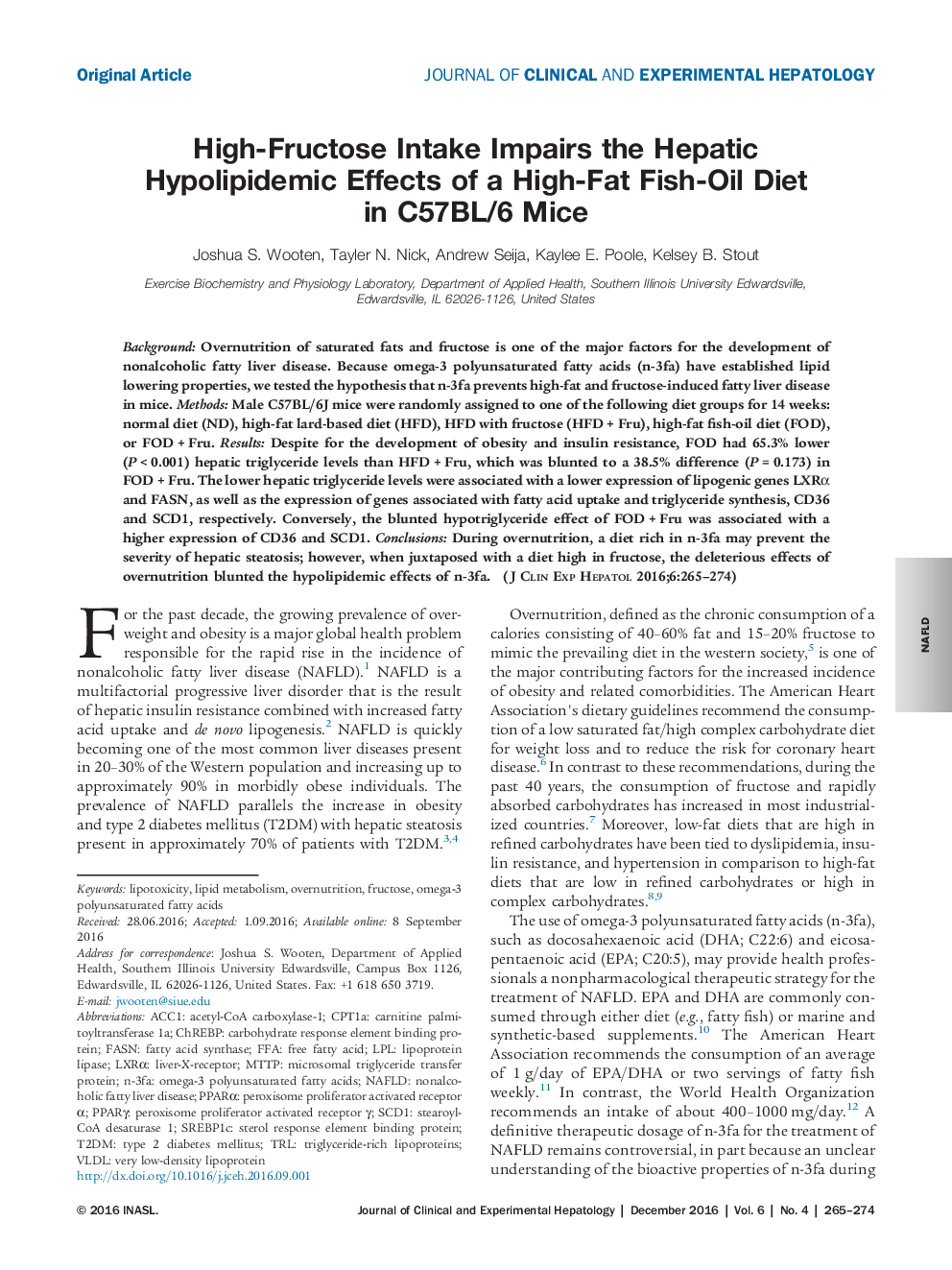| Article ID | Journal | Published Year | Pages | File Type |
|---|---|---|---|---|
| 5664957 | Journal of Clinical and Experimental Hepatology | 2016 | 10 Pages |
BackgroundOvernutrition of saturated fats and fructose is one of the major factors for the development of nonalcoholic fatty liver disease. Because omega-3 polyunsaturated fatty acids (n-3fa) have established lipid lowering properties, we tested the hypothesis that n-3fa prevents high-fat and fructose-induced fatty liver disease in mice.MethodsMale C57BL/6J mice were randomly assigned to one of the following diet groups for 14 weeks: normal diet (ND), high-fat lard-based diet (HFD), HFD with fructose (HFD + Fru), high-fat fish-oil diet (FOD), or FOD + Fru.ResultsDespite for the development of obesity and insulin resistance, FOD had 65.3% lower (P < 0.001) hepatic triglyceride levels than HFD + Fru, which was blunted to a 38.5% difference (P = 0.173) in FOD + Fru. The lower hepatic triglyceride levels were associated with a lower expression of lipogenic genes LXRα and FASN, as well as the expression of genes associated with fatty acid uptake and triglyceride synthesis, CD36 and SCD1, respectively. Conversely, the blunted hypotriglyceride effect of FOD + Fru was associated with a higher expression of CD36 and SCD1.ConclusionsDuring overnutrition, a diet rich in n-3fa may prevent the severity of hepatic steatosis; however, when juxtaposed with a diet high in fructose, the deleterious effects of overnutrition blunted the hypolipidemic effects of n-3fa.
